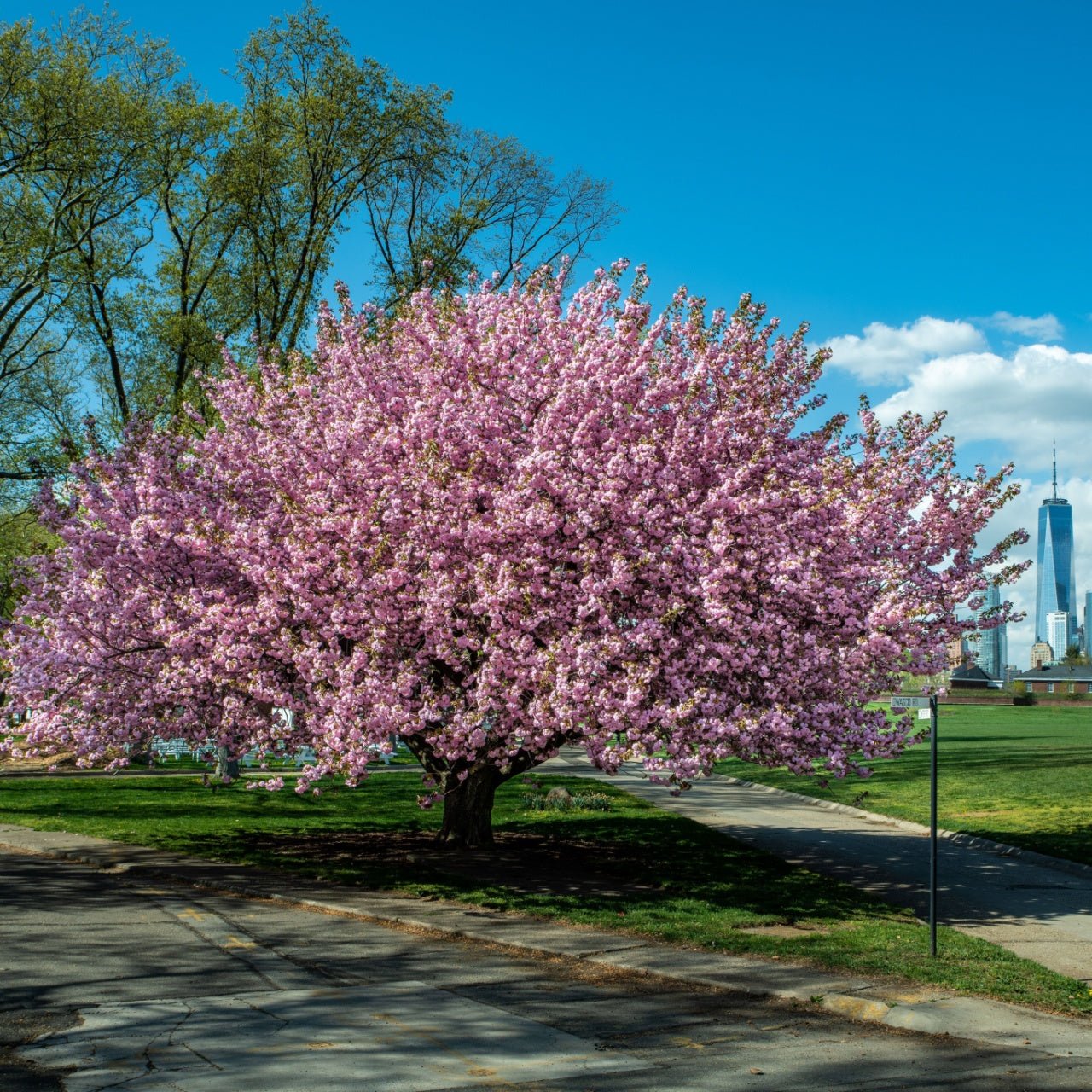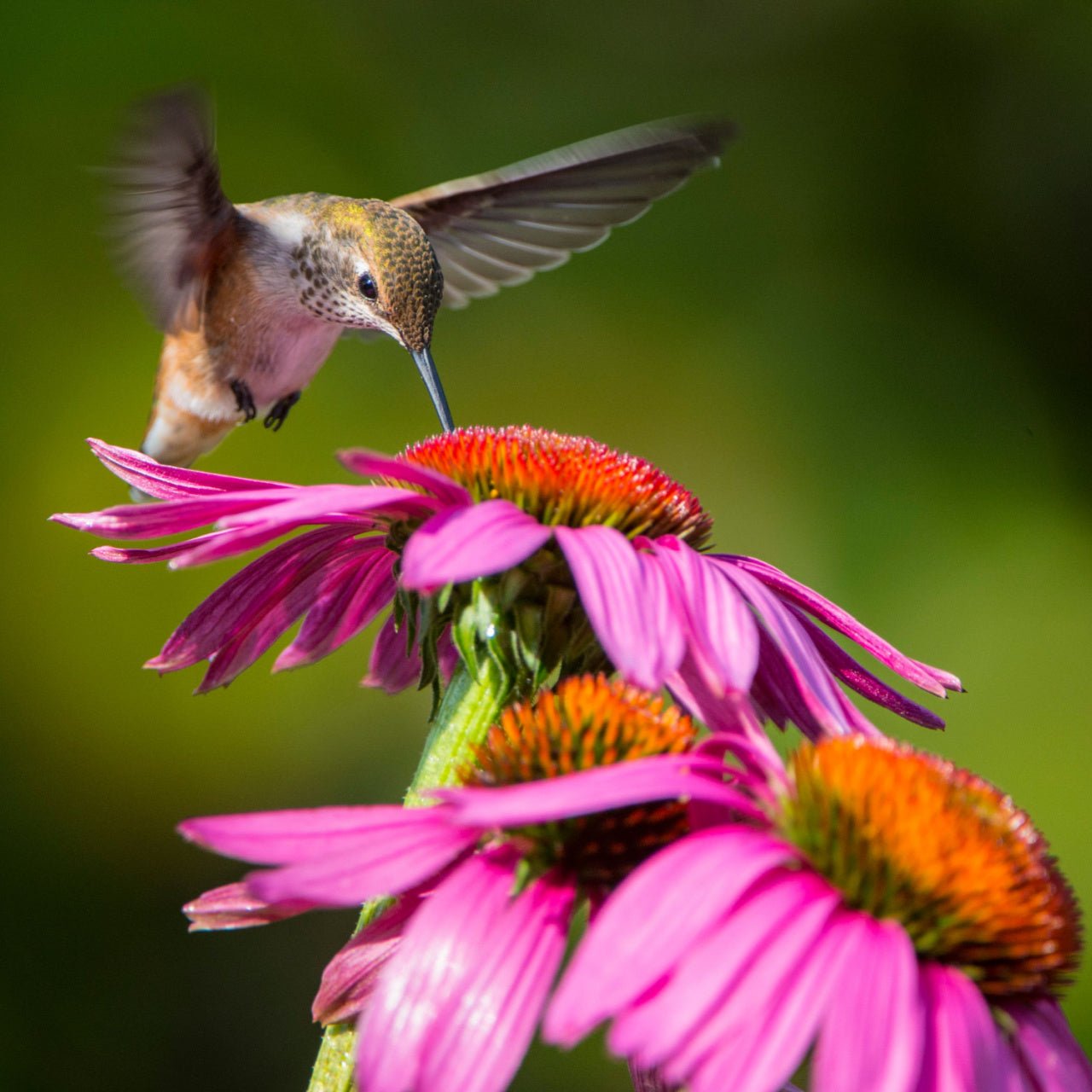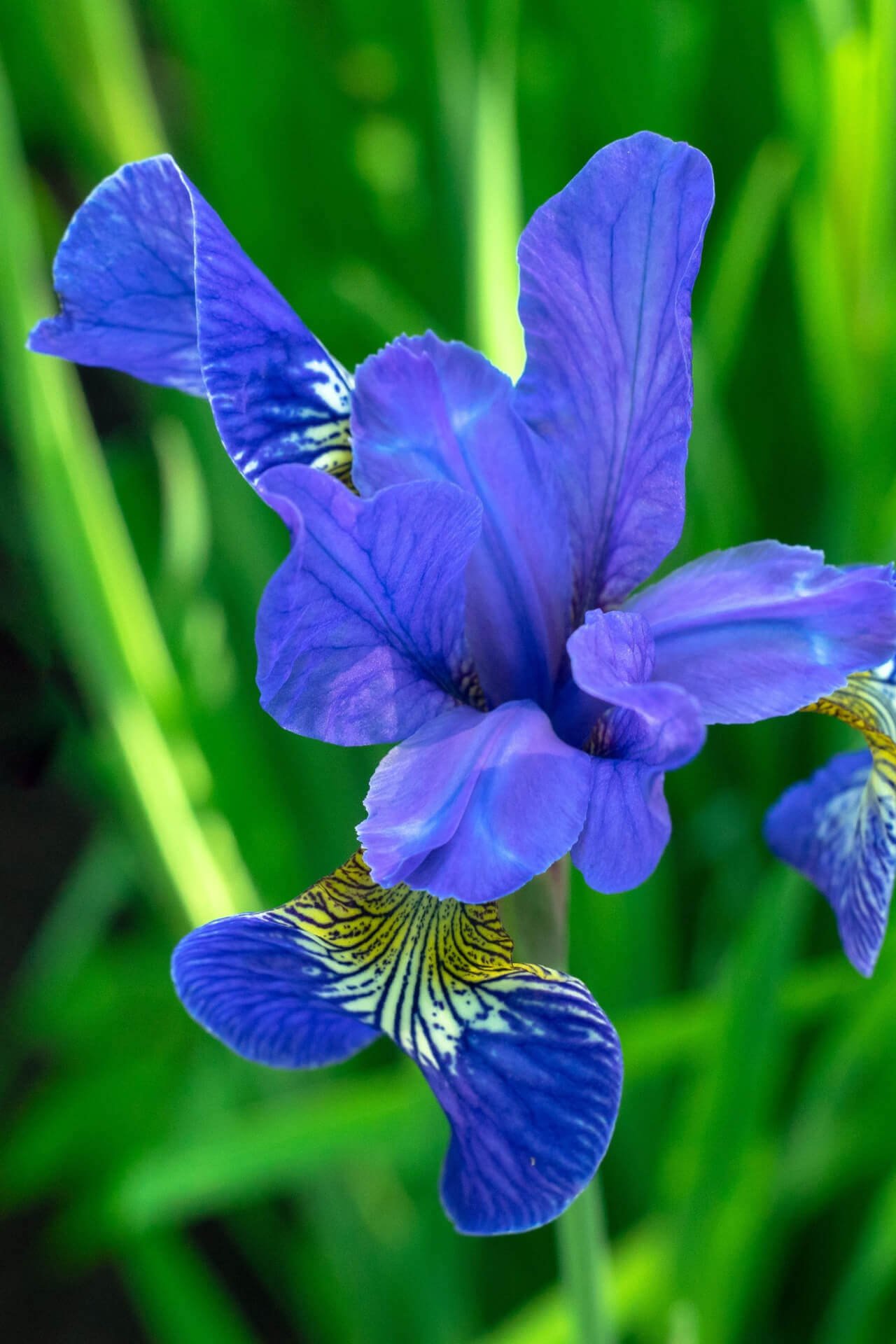

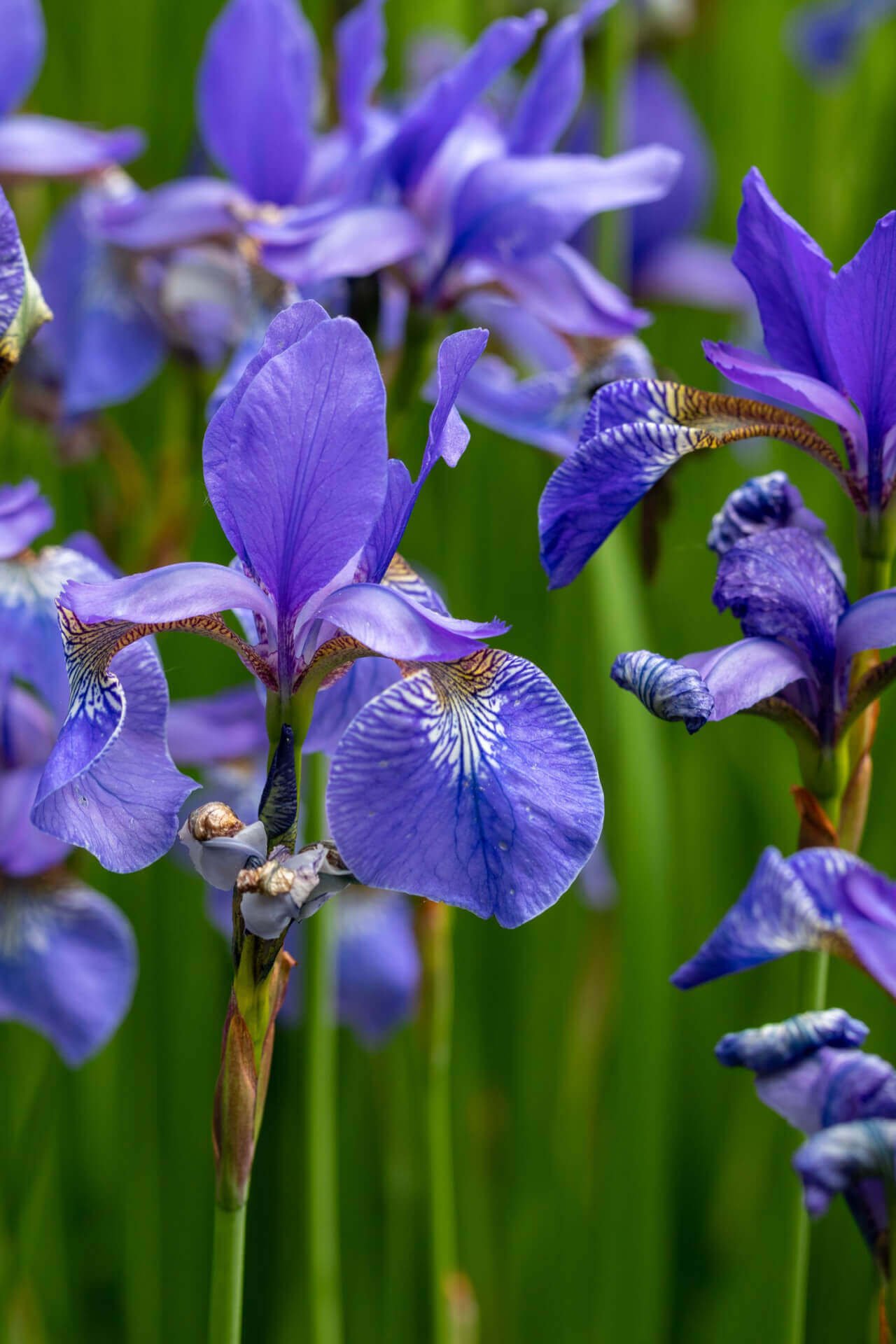

Blue Flag Iris
Attracts butterflies and beneficial insects
Cleanses and purifies water naturally
Beautiful, elegant blooms in spring
Thrives in
ZONE 5ZONE 6ZONE 7ZONE 8ZONE 9This plant ships:
Ships Week of May 19th1 Year Guarantee on all plants
Blue Flag Iris - Iris versicolor
The Blue Flag Iris (Iris versicolor) is a sun-loving, rhizomatous perennial and forms a distinct cluster of bright-green, blade-like leaves. Each cluster produces multiple long-stemmed flowers. The flowers in combination with their gently curving leaves creates a graceful persona in the garden.
With its vibrant violet-blue flowers, it is no surprise that this plant is attractive to bees, butterflies, and hummingbirds. This semi-aquatic plant will bring a menagerie of bustling pollinators to any wet area of your garden or the edge of your water feature. Nestle these water-loving flowers in between accent rocks next to your stream, or next to the gazebo that overlooks your pond. They are a vibrant addition to your garden-scape.
Plant Details - Blue Flag Iris
Family: Iridaceae
Hardiness Zones: 3-9
Light Requirement: Full sun, partial shade
Water Needs: Medium to wet
Height: 2-3 ft
Spread: 2-2.5 ft
Growth Rate: Moderate
Bloom Time: Late May to June
Flower Color: Violet-blue with a blotch of yellow
Wildlife Value: Attracts pollinators
The Blue Flag Iris is native to the Northeastern USA and commonly found in wetlands and the edges of marshes and bogs. They are considered semi-aquatic plants. It will not tolerate shaded environmental; however, it can do well in partial sun.
This flower holds a special place in the heart of TN Nursery, as the Iris is Tennessee’s state flower. If you live in and love Tennessee, add this delightful flower to your garden to remind you of your beautiful home state!
Landscape Uses and Maintenance - Blue Flag Iris
These plants will spread to form colonies of irises and can spread to fill an area in which you need full plant coverage. After midsummer, you can propagate this plant by division. TN Nursery recommends that you do so every 3 years to prevent crowding.
These plants are low maintenance and do not require fertilization after establishment, however they do appreciate bone meal just after planting. They thrive in moist, acidic soil with ample humus. Due to their robust rhizomes, they are particularly useful for erosion control. You can plant these with a native wetland perennial mix to further attract pollinators to your garden!
Noteworthy Characteristics
Attractive to pollinators, erosion control in moist areas, low-maintenance.
These elegant perennials are an excellent addition to your wetland moist area of your garden. Shop for Blue Flag Irises online at TN Nursery. For 68 years, we have served the landscaping industry and homeowners with specimen plants.
This Is How Your Plants Will Look upon Delivery
Bloom Season
Summer
Bloom/Foliage Color
Blue
Height at Maturity
Under 12"
Care
Blue Flag Iris thrives in moist, well-drained soil and requires regular watering. Ensure the soil remains consistently damp, especially during hot weather. Mulch near the plant to maintain moisture and prevent weeds. Prune spent flowers to promote new blooms.
Plant Reproduction
Blue Flag Iris spread by rhizomes and self-seeding
Shipping date depends on the date displayed and chosen when you order from the product's page.
We only accept returns on plants verified dead. If you think your plants have died, we offer a 1 year warranty, please use this File a Claim Link to verify dead plants and start with return warranty process.





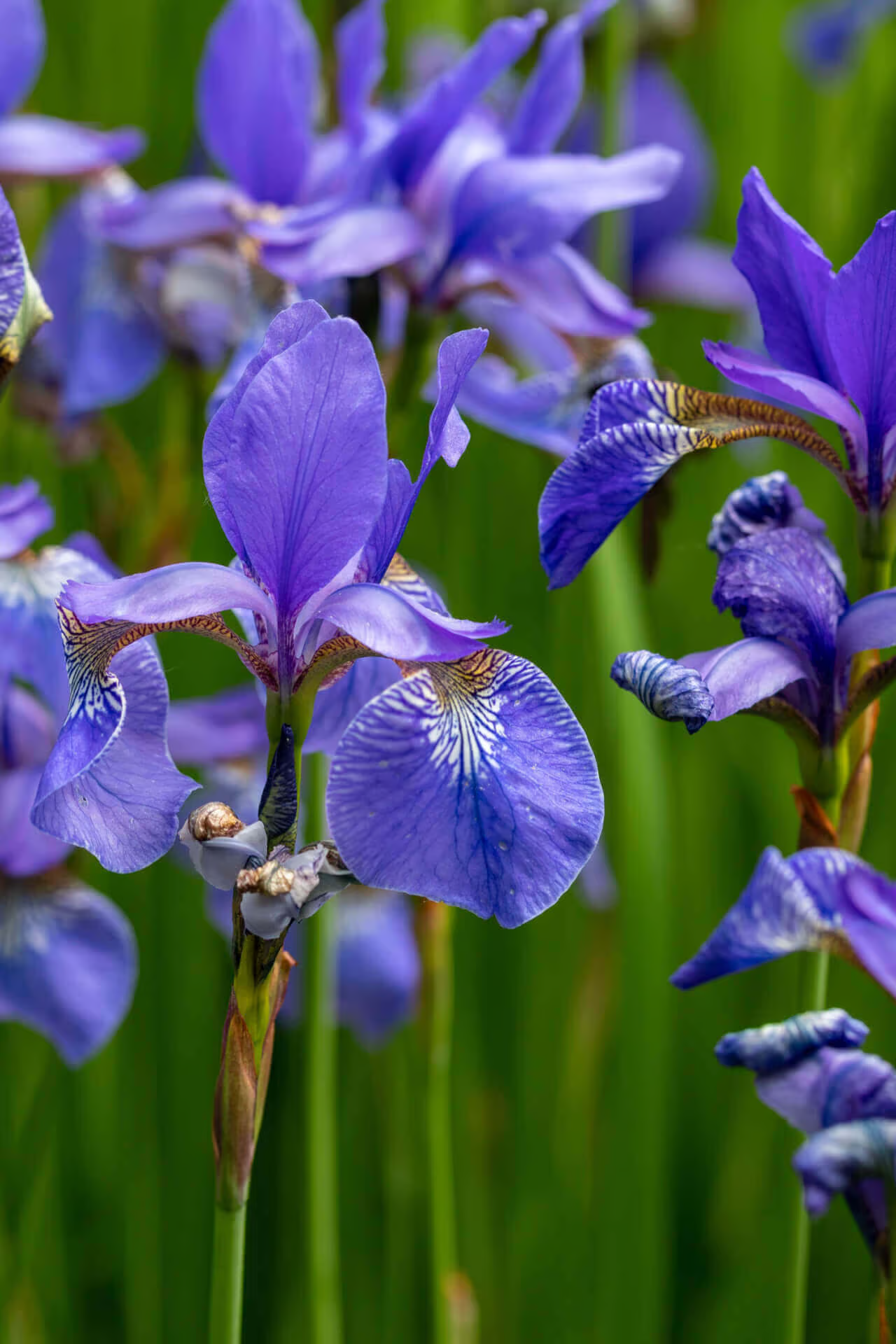
Ideal for Water Gardens:
Thrives in wet conditions, making it perfect for ponds and boggy areas. Its lush, colorful blooms enhance the aesthetic of water gardens and naturalistic landscapes
Elegant Foliage:
Features slender, sword-like leaves that add a graceful texture to your garden. The foliage complements the striking blooms and enhances the overall design.
Cold Hardy:
Resilient in colder climates and withstands frost. Ensures that your garden remains beautiful throughout the changing seasons.
Colorful Contrasts:
Blue Flag Iris features yellow "accessories" throughout June and July, with yellow patches and veins contrasting beautifully with deep blue and violet petals. This striking combination enhances its compatibility with other similarly colored flowers in your garden.
Caring Tips
How do I care for my Blue Flag Iris?
Each box contains detailed care instructions and information about your product. But here's the basics.
Care Tips
Blue Flag Iris thrives in moist, well-drained soil and requires regular watering. Ensure the soil remains consistently damp, especially during hot weather. Mulch near the plant to maintain moisture and prevent weeds. Prune spent flowers to promote new blooms.
Light Requirements
Blue Flag Iris blossoms in complete sun to partial shade and prefers at least 4-6 hours of sunlight per day for optimal growth and abundant flowering, although it may also grow in shadier spots.
Hardy Planting Zones
5 • 6 • 7 • 8 • 9
Header
Use this content to share information about your store and products.
Frequently Asked Questions
How often should I water my plants?
How do I know if my plant is getting too much or too little sunlight?
What should I do to prepare my plants for winter?
What are the signs that my plant needs fertilizing?
How can I prevent pests from damaging my plants?
How do I choose the right plant for my climate zone?







